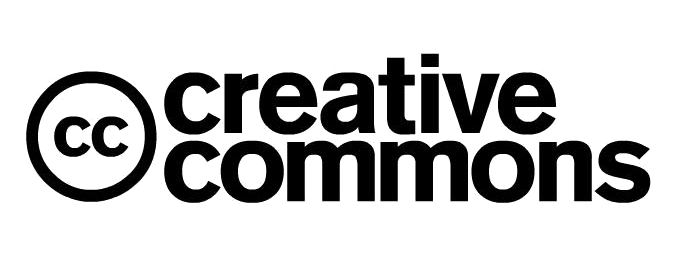Magnetic field effect on H3K9/14 acetylation in neurons of honeybee mushroom bodies
DOI:
https://doi.org/10.33910/2687-1270-2022-3-3-378-384Keywords:
electromagnetic fields, magnetic field, insects, honeybee, histone acetylation, central nervous systemAbstract
Living things have been evolving under certain parameters of the geomagnetic field. Many organisms are sensitive to electromagnetic fields and use them for spatial orientation and navigation during migration. The honeybee Apis mellifera L. is a convenient experimental model to study the biological effects of electromagnetic fields. The honeybees use the Earth’s magnetic field for orientation in space and mobilization for foraging. Recent decades have seen an emergence of numerous anthropogenic sources of electromagnetic radiation. They are likely to be stressors for bees and other insects. It is known the transcriptional activity changes as part of stress response, while histone acetylation is associated with transcription activation. The article reports the results of the study into H3K9/14 histone acetylation in the neurons (inner Kenyon cells) of mushroom body calyxes (structures responsible for learning and memory in insects) in the honeybee. It was shown that an increase in the natural geomagnetic field leads to a decrease in H3K9/14 histone acetylation. This indicates a decrease in transcriptional activity in mushroom bodies, which may affect cognitive and foraging activities of the honeybee.
References
Favre, D. (2011) Mobile phone-induced honeybee worker piping. Apidologie, vol. 42, no. 3, pp. 270–279. https://doi.org/10.1007/s13592-011-0016-x (In English)
Fleischmann, P. N., Grob, R., Rössler, W. (2020) Magnetoreception in Hymenoptera: Importance for navigation. Animal Cognition, vol. 23, no. 6, pp. 1051–1061. https://doi.org/10.1007/s10071-020-01431-x (In English)
Greggers, U., Koch, G., Schmidt, V. et al (2013) Reception and learning of electric fields in bees. Proceedings of the Royal Society B: Biological Sciences, vol. 280, no. 1759, article 20130528. https://doi.org/10.1098/rspb.2013.0528 (In English)
Kumar, N. R., Sangwan, S., Badotra, P. ( 2011) Exposure to cell phone radiations produces biochemical changes in worker honey bees. Toxicology International, vol. 18, no. 1, pp. 70–72. PMID: 21430927 (In English)
Lambinet, V., Hayden, M. E., Reid, C., Gries, G. (2017) Honey bees possess a polarity-sensitive magnetoreceptor. Journal of Comparative Physiology A: Neuroethology, Sensory, Neural, and Behavioral Physiology, vol. 203, no. 12, pp. 1029–1036. https://doi.org/10.1007/s00359-017-1214-4 (In English)
Liang, C.-H., Chuang, C.-L., Jiang, J.-A., Yang, E.-C. (2016) Magnetic sensing through the abdomen of the honey bee. Scientific Reports, vol. 23, no. 6, article 23657. https://doi.org/10.1038/srep23657 (In English)
Lopatina, N. G., Zachepilo, T. G., Dyuzhikova, N. A. et al. (2020) Vliyanie izmenenij elektromagnitnykh polej na pishchevuyu i kognitivnuyu aktivnost’ medonosnoj pchely [The impact of changes in electromagnetic fields on food and cognitive behaviour of the honeybee]. Integrative Physiology, vol. 1, no. 3, pp. 231–241. https://doi.org/10.33910/2687-1270-2020-1-3-231-241 (In Russian)
Lopatina, N. G., Zachepilo, T. G., Kamyshev, N. G. et al. (2019) Vliyaniye neioniziruyushchego elektromagnitnogo izlucheniya na povedenie medonosnoj pchely Apis mellifera L. (Hymenoptera, Apidae) [Effect of non-ionizing electromagnetic radiation on the honeybee, Apis mellifera L. (Hymenoptera, Apidae) behaviour]. Entomologicheskoye obozrenie, vol. 98, no. 1, pp. 35–43. https://doi.org/10.1134/S0367144519010039 (In Russian)
Mobbs, P. (1982) The brain of the honeybee Apis mellifera. I. The connections and spatial organization of the mushroom bodies. Philosophical Transactions of the Royal Society B, vol. 298, no. 1091, pp. 309–354. https://doi.org/10.1098/rstb.1982.0086 (In English)
Nikitina, E. A., Medvedeva, A. V., Gerasimenko, M. S. et al. (2017) Oslablennoe magnitnoe pole Zemli: vliyanie na transkriptsionnuyu aktivnost’ genoma, obuchenie i pamyat’ u Dr. melanogaster [Weakened geomagnetic field: Impact on transcriptional activity of the genome, learning and memory formation in Dr. melanogaster]. Zhurnal vysshej nervnoj deyatel’nosti im. I. P. Pavlova — I. P. Pavlov Journal of Higher Nervous Activity, vol. 67, no. 2, pp. 246–256. (In Russian)
Shepherd, S., Lima, M. A. P., Oliveira, E. E. et al. (2018) Extremely low frequency e lectromagnetic fields impair the cognitive and motor abilities of honey bees. Scientific Reports, vol. 8, no. 1, article 7932. https://doi.org/10.1038/s41598-018-26185-y (In English)
Shvetsov, A. V., Zachepilo, T. G., Vajdo, A. I. et al. (2013) Ob epigeneticheskoj regulyatsii protsessa formirovaniya dolgovremennoj pamyati [On epigenetic regulation of process of formation of long-term memory]. Zhurnal evolyutsionnoj biokhimii i fiziologii, vol. 49, no. 2, pp. 97–104. (In Russian)
Downloads
Published
Issue
Section
License
Copyright (c) 2022 Tatiana G. Zachepilo, Karina V. Isakova, Alisa K. Pribyshina, Nikolay G. Kamyshev, Nina G. Lopatina

This work is licensed under a Creative Commons Attribution-NonCommercial 4.0 International License.
The work is provided under the terms of the Public Offer and of Creative Commons public license Creative Commons Attribution 4.0 International (CC BY 4.0).
This license permits an unlimited number of users to copy and redistribute the material in any medium or format, and to remix, transform, and build upon the material for any purpose, including commercial use.
This license retains copyright for the authors but allows others to freely distribute, use, and adapt the work, on the mandatory condition that appropriate credit is given. Users must provide a correct link to the original publication in our journal, cite the authors' names, and indicate if any changes were made.
Copyright remains with the authors. The CC BY 4.0 license does not transfer rights to third parties but rather grants users prior permission for use, provided the attribution condition is met. Any use of the work will be governed by the terms of this license.







